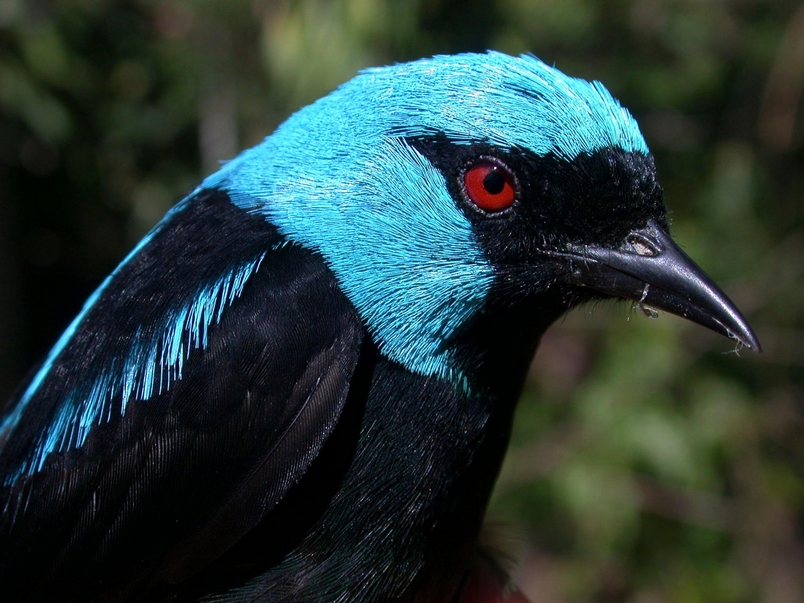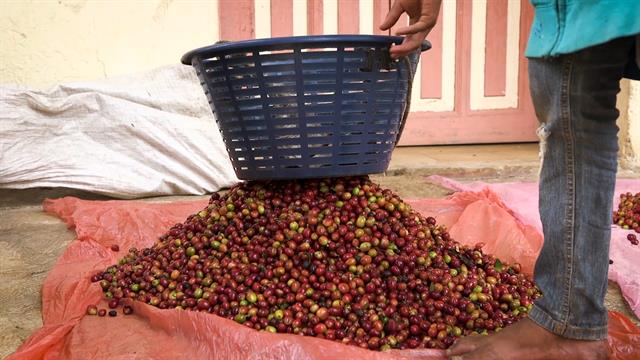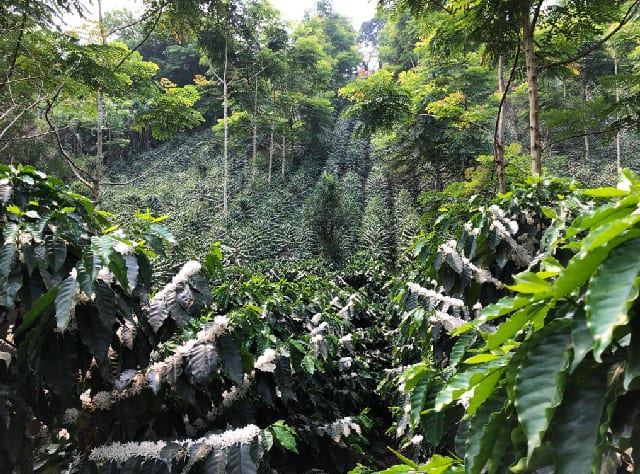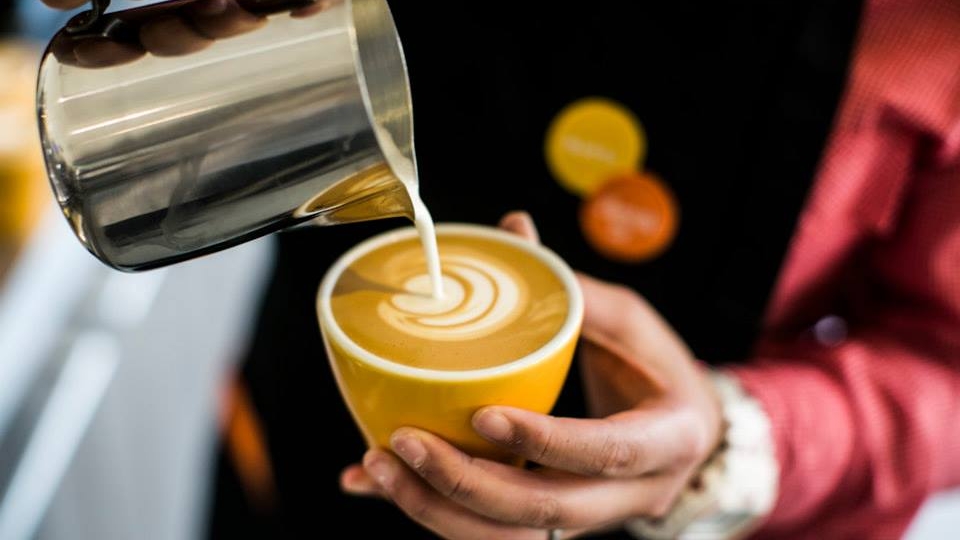When you drink coffee, do you ever think about the homeless birds?
Professional coffee knowledge exchange more coffee bean information please follow the coffee workshop (Wechat official account cafe_style)
Many people live without coffee every day, but they may not realize that the coffee they love affects the population of tropical birds.
A rare study of more than 57,000 birds in Costa Rica offers new insights into how coffee cultivation affects the biodiversity of tropical birds.
Americans drink a total of 400 million cups of coffee a day, but most coffee lovers don't seem to know how their cherished coffee affects rainforest bird populations in some of the world's biodiversity hotspots.
Fortunately, biologist ── an Sekenzoge lu of the University of Utah (Utah) and his team are working on the subject.

One of the birds found in Costa Rica is the red-legged conical Finch (scarlet-thighed dacnis), which may have been affected by the transformation of the rainforest into a coffee plantation. New research finds that while the shade of coffee plantations helps some birds, they are not enough to stop the decline of others.
In the 12-year landmark study, they tracked 50, 7255 individually marked birds at 19 sites, 2655 species in Costa Rica. It brings a glimmer of light to the question of how rainforest birds survive in a patchwork habitat in the changing countryside. Rainforest birds are important indicators of ecosystem health. The team compared the bird populations in the main open coffee plantations (with only a few shade) with those in the remaining forest areas. The study was partly sponsored by the National Geographic Society and published Monday in the Proceedings of the National Academy of Sciences (PNAS). Studies have shown that even if the forest cover in coffee plantations only slightly increases ──, to be exact, an increase of 7 to 13 percent can be of great help to birds.
Tropical agriculture is an important thrust of species loss. The researchers found that in coffee plantations that provide some shade, ── should not be confused with fully shaded "shaded" (shade grown) coffee growing under mature trees. The decline in the number of ── species is still going on, and coffee plantations cannot replace large areas of protected forest. In coffee plantations and forests of all sizes and types, the researchers found that the number of birds with reduced individual numbers was 61% more than those with increased or flat individual numbers. The only exception is the 4188-square-kilometer La Amistad National Park (La Amistad International Park) ──, a transboundary protected area close to the United States state of Rhode Island, straddling Costa Rica and Panama.

Why is this important?
Bird diversity is a good indicator of the soundness of the ecosystem. That's why I think people should pay attention to research like this, "said Robert Rice (Robert Rice). Les, a geographer at the Smithsonian migrant Bird Center (Smithsonian Migratory Bird Center) dedicated to conservation research and public education, was not involved in the study.
"everyone who drinks coffee should pay attention. Every sip of coffee you drink will leave footprints on the earth, but is that footprint good or bad for birds? This is an open question, and this study will make the answer clearer, "said Paul Robbins (Paul Robbins). Robbins is dean of the Nielsen Institute for the Environment (Nelson Institute for Environmental Studies) at the University of Wisconsin-Madison (University of Wisconsin-Madison).
Long-term and large-scale
"one of the reasons why this study is so powerful is that it is a long survey and very few people do it. They netted 60,000 birds between 1999 and 2010. Long-term, large-scale tracking like that is extremely rare. The studies I've been involved in used to ── you to go there at once, and then calculate the number of birds in X or Y years. You can't know the changes over the years, you can only collect some samples of birds and species. "said Robbins.
Serkenzog recruited local farmers as "citizen scientists" who laboriously helped the research team mark thousands of birds with their bare hands year after year. In addition to the National Geographic Society, they rely on funding from the Moore Family Foundation (Moore Family Foundation), the Wildlife Conservation Society (Wildlife Conservation Society) and the Winslow Foundation (Winslow Foundation).
"these people, they are really full of enthusiasm. This is a very, very comprehensive study, covering many different topography. Yes, they explore coffee plantations, but they also explore riparian corridors, regenerated forests, virgin forests, and such comparisons and analyses are extremely rare, "Robbins said."
"short-term research focuses only on species richness," Serkenzogg said. "it is likely to paint a better picture than the actual ecological situation. "
"it is absolutely not enough to observe how many species there are in a single habitat. In the eyes of the average person, having a lot of species is a good thing-- that's a good thing, ──, but that's not enough. The key is what type of species exists there, "he said. It is important to pay special attention to endangered species, species that can only be found in certain parts of the planet, and "obligate species" ──-birds that eat only certain foods or live in specific habitats. Although not many tree-shaded plantations have certainly greatly increased the biodiversity of birds, the study found that such sites do not help ── birds that live only in forests, which gradually lose their precious habitat as coffee production expands.

The importance of consumers
"Why do we need to care about biodiversity and the fact that humans are driving these species to extinction? Human beings are the cause of the sixth mass extinction of the earth. We have a moral obligation not to destroy the planet fundamentally, "Serkenzoge said." "if you drink coffee and ── important crops in many tropical biodiversity hotspots around the world, where you choose to get coffee can have a positive or negative impact. "
For coffee lovers who want to minimize the "turf grab with birds" situation, Serkenzoge's advice is to buy coffee from Ethiopia or Kenya. Coffee is the underlying vegetation of East Africa, and it is still traditionally planted under 6-meter-high native trees. In addition, a large proportion of Mexican coffee beans are grown in shade, he said.
However, on a practical level, single-source coffee can be very expensive. For people who care about bird diversity, the Smithsonian migrant Bird Center's Bird-friendly Coffee Program (Bird Friendly Coffee Program, co-founded by Rice in the late 1990s) is the best certification program in this area, Serkenzoge said.
Other organizations such as the Rainforest Alliance (The Rainforest Alliance) also offer their own certifications. While these institutions usually focus on the ecological impact, they also take care of other aspects, such as labour welfare.
"We need to know how this type of agricultural landscape reduces or promotes biodiversity. We need more research like this. Not only for coffee, we also need to do research on cocoa, we need to do this research on all kinds of crops in the world. "said Robbins.
END
Important Notice :
前街咖啡 FrontStreet Coffee has moved to new addredd:
FrontStreet Coffee Address: 315,Donghua East Road,GuangZhou
Tel:020 38364473
- Prev

Bettr Barista gives coffee a special meaning. How does a cup of coffee change a person's fate?
Professional coffee knowledge exchange more coffee bean information Please follow the coffee workshop (Wechat official account cafe_style) A cup of mellow coffee, is the beginning of the day, is the motivation to go to work, for modern people, coffee has become an indispensable drink in life. Apart from warming the heart and boosting the spirit, can you think of any other meaning of coffee? Let's take a look at a micro-electricity first.
- Next

2019
Professional coffee knowledge exchange more coffee bean information Please pay attention to the coffee workshop (Wechat official account cafe_style) the world's most expensive coffee is no longer Jamaica Blue Mountain Coffee, Indonesia Kopi Luwak, now those who know a little coffee, have come into contact with coffee culture, you must know Rose Summer Coffee, then what is the price of the most expensive Rose Summer Coffee? July 17th the capital
Related
- What effect does Italian American coffee with filter paper have? Will coffee taste better if it is put on filter paper at the bottom of the powder bowl?
- What is the color difference in coffee beans? What are the characteristics of honey processed coffee beans? Why are the anaerobically treated coffee beans uneven in color?
- How does novice Xiaobai quickly get started and make coffee? Newbies learn to make coffee by hand and share the specific steps and process process!
- Costa tea has a shelf life of 100 years?! Expert: Unable to verify
- It's a huge uproar! American milk addition was rejected by Manner employees?!
- Mocha pot coffee bean recommendations| How fine and how much powder should be used for grinding? What parameter ratios do I need to use to make milk with Mocha pot coffee?
- What are the characteristics of the world's top ten coffee beans treated with Costa Rica honey? How to make black honey kadura from Tarazhu Pilon Processing Plant taste good?
- How to make deep-roasted coffee? What grinding water temperature does authentic Jamaica Blue Mountain No. 1 coffee use to brew it well?
- Selected high-grade rose summer coffee flavor tasting guide Why Panama rose summer has the aroma of flowers and fruits
- What equipment does a novice Xiaobai need to buy to learn to make coffee? Filter cup electronic scale bean grinder manual flushing pot purchase guide

